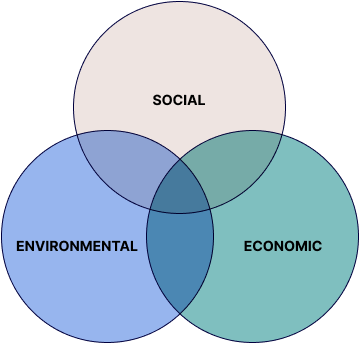TESTING
It is becoming more and more common that pavement construction must be green—it must meet sustainability and environmental requirements.
Usually, we associate energy consumption, recycling, and life-cycle costs with sustainability. But, there are pavement surface characteristics that can be included in the sustainability calculations.

The following pavement surface characteristics impact sustainability and may qualify for credits or points in various sustainability programs.
Reduced traffic noise improves the environment and, in some cases, this can be achieved through reduced tire-pavement noise. The Greenroads program allows credits for pavements meeting maximum noise levels as measured using the OBSI method.
Managing runoff through use of a permeable pavement contributes to sustainability by way of reducing erosion, water pollution, and improving habitat. Permeable pavement can also improve safety through reduced splash and spray, and improve the environment through reduces tire-pavement noise.
Both the Greenroads and USGBC programs allow points or credits for pavements having SRI that meets a minimum threshold.
Solar reflectance index (or albedo) of a surface is a measure of the amount of solar radiation reflected by the surface relative to the incident radiation. SRI is an important quantity because of the urban heat island effect. Urban heat island is the name used to refer to the effect of urban areas becoming hotter than surrounding rural areas. The temperature difference can be up to 10 degrees.
The heat island effect is an environmental and sustainability concern because it increases summertime peak energy demand, air conditioning costs, air pollution, greenhouse gas emissions, heat related illness, and even mortality. Large surfaces, such as paved parking areas, may contribute to the heat island effect, depending on their SRI. Surfaces with high SRI contribute less than surfaces with low SRI.
Standards and test procedures related to solar reflectance and SRI:
Rolling resistance is the resistance to the motion of a tire rolling on a pavement, but not including resistance due to braking. Rolling resistance is caused by energy dissipating mechanisms such as the tire deflections that occur in the contact patch.
These deflections are greatly influenced by the tire pressure, so tire pressure is a significant factor in rolling resistance. Reducing rolling resistance means energy savings. For an individual tire, the amount of energy saved may be very small. However, when multiplied by the number of tires in the nation’s vehicle fleet, and the number of miles traveled, a reduction in rolling resistance can translate to a very large overall energy savings.
There are at least three pavement surface characteristics that contribute to rolling resistance:
There are several programs that contain requirements applicable to pavement surface characteristics.
Greenroads is a sustainability rating system for roadway design and construction projects. Originally developed and funded by Transnow at the University of Washington, WSDOT, Caltrans, TXDOT, MnDOT, ODOT, and Western Federal Lands Highway Division (WFLHD).
LEED (Leadership in Energy and Environmental Design) is a green building certification system. Mainly, the system covers building design and construction however, hardscape including paved parking lots is included.
Utilizes the self-evaluation tool, INVEST (Infrastructure Voluntary Evaluation Sustainability Tool), to integrate sustainability into transportation projects.
The Institute for Sustainable Infrastructure (ISI) is a partnership of the American Society of Civil Engineers (ASCE), American Council of Engineering Companies (ACEC), and the American Public Works Association (APWA). Envision is the associated sustainability rating system.
3.2.1 Minimize Noise and Vibration – Carry out studies to predict the levels of airborne, ground-borne, and structure-borne noise and vibration, and propose mitigation plans to manage these to acceptable levels in the community.
8.1.5 Avoid Urban Heat Islands – Implement a design that avoids the creation of urban heat islands.
References and Sources:
Certification program for New York State Department of Transportation (NYSDOT) for sustainable transportation infrastructure.
Illinois Department of Transportation’s (IDOT) sustainability performance rating system.
CONTACT US

The Transtec Group engineers the best pavements in the world. Have a pavement problem? Give us a call—we’re good listeners.
© 2025 | The Transtec Group, Inc. | Privacy Policy